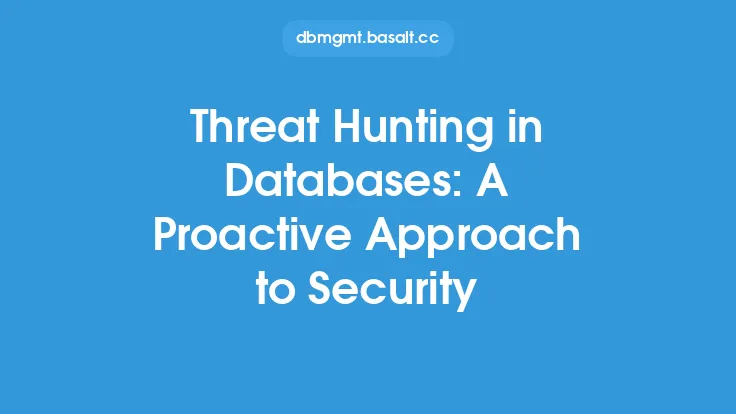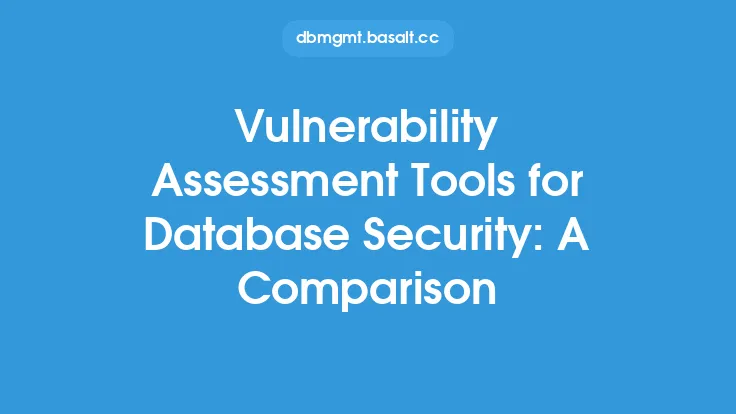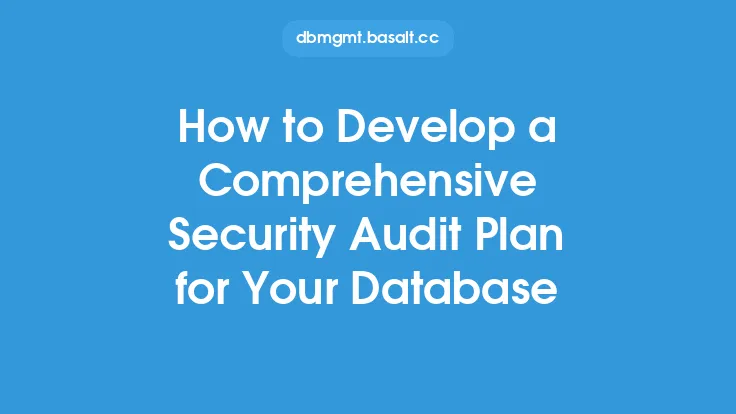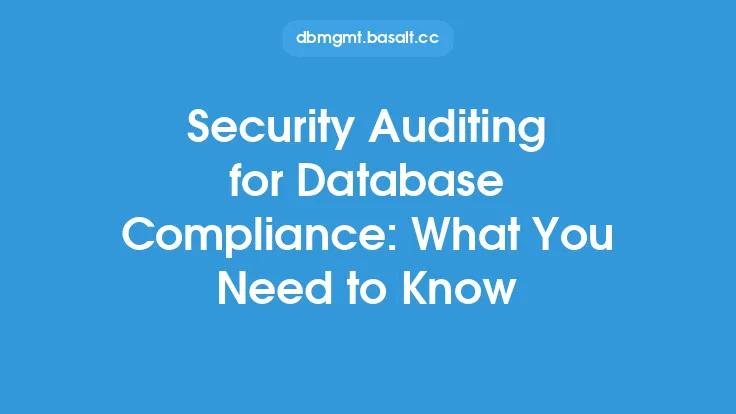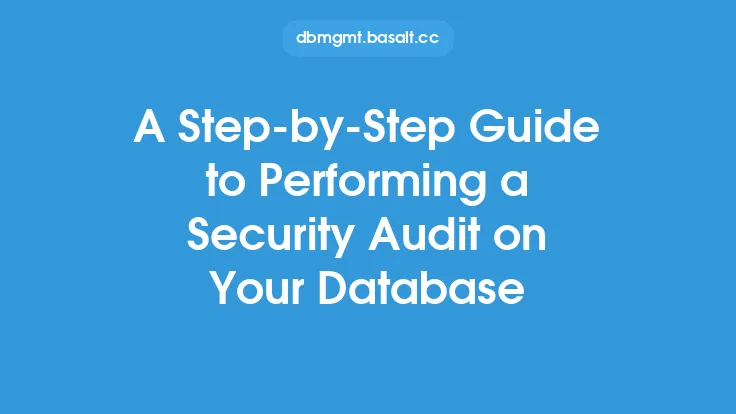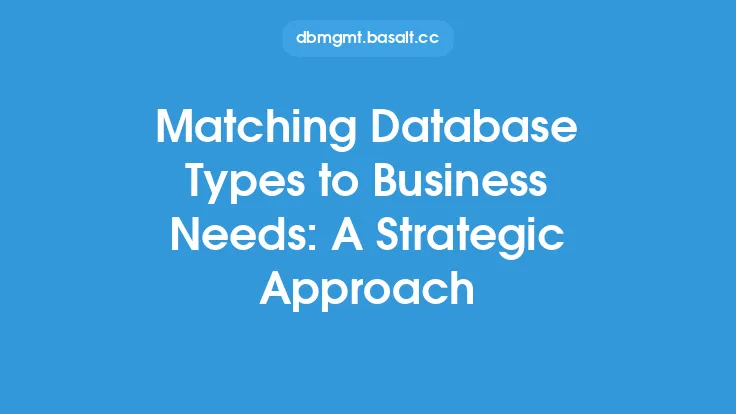Database security is a critical aspect of any organization's overall security posture, and vulnerability management is a key component of this. A proactive approach to database vulnerability management involves identifying, classifying, prioritizing, and remediating vulnerabilities in a timely and effective manner. This approach is essential to prevent attackers from exploiting vulnerabilities and gaining unauthorized access to sensitive data.
Introduction to Database Vulnerability Management
Database vulnerability management is a continuous process that involves monitoring and assessing the database environment for potential vulnerabilities. This includes identifying vulnerabilities in the database management system, operating system, and network, as well as vulnerabilities in the application code and configuration. The goal of database vulnerability management is to identify and remediate vulnerabilities before they can be exploited by attackers.
Understanding Database Vulnerabilities
Database vulnerabilities can be classified into several categories, including:
- Configuration vulnerabilities: These occur when the database is not properly configured, leaving it open to attack. Examples include weak passwords, unnecessary services, and misconfigured access controls.
- Patch vulnerabilities: These occur when the database management system or operating system is not up-to-date with the latest security patches. This can leave the database vulnerable to known exploits.
- Code vulnerabilities: These occur when the application code contains flaws or bugs that can be exploited by attackers. Examples include SQL injection and cross-site scripting (XSS) vulnerabilities.
- Network vulnerabilities: These occur when the network is not properly configured, leaving the database open to attack. Examples include weak firewalls, misconfigured VPNs, and unsecured network protocols.
Database Vulnerability Management Process
The database vulnerability management process involves several steps, including:
- Vulnerability identification: This involves using various tools and techniques to identify potential vulnerabilities in the database environment.
- Vulnerability classification: This involves categorizing identified vulnerabilities based on their severity and potential impact.
- Vulnerability prioritization: This involves prioritizing vulnerabilities based on their severity and potential impact, as well as the likelihood of exploitation.
- Vulnerability remediation: This involves taking steps to remediate identified vulnerabilities, such as applying patches, reconfiguring the database, or modifying application code.
- Vulnerability monitoring: This involves continuously monitoring the database environment for new vulnerabilities and ensuring that previously remediated vulnerabilities do not reoccur.
Tools and Techniques for Database Vulnerability Management
Several tools and techniques are available to support database vulnerability management, including:
- Vulnerability scanners: These tools use automated techniques to identify potential vulnerabilities in the database environment.
- Penetration testing: This involves simulating an attack on the database environment to identify vulnerabilities and assess the effectiveness of security controls.
- Configuration management: This involves using tools and techniques to manage and track changes to the database configuration.
- Patch management: This involves using tools and techniques to manage and track the application of security patches to the database management system and operating system.
Best Practices for Database Vulnerability Management
Several best practices can be followed to support effective database vulnerability management, including:
- Regularly scan for vulnerabilities: This involves using vulnerability scanners and other tools to regularly identify potential vulnerabilities in the database environment.
- Implement a patch management process: This involves using tools and techniques to manage and track the application of security patches to the database management system and operating system.
- Use secure configuration guidelines: This involves using guidelines and templates to ensure that the database is properly configured and secured.
- Monitor database activity: This involves using tools and techniques to monitor database activity and detect potential security incidents.
Challenges and Limitations of Database Vulnerability Management
Several challenges and limitations can impact the effectiveness of database vulnerability management, including:
- Complexity of the database environment: This can make it difficult to identify and remediate vulnerabilities, particularly in large and complex database environments.
- Limited resources: This can limit the ability to implement effective database vulnerability management processes and procedures.
- Evolving nature of threats: This can make it difficult to stay ahead of emerging threats and vulnerabilities, particularly in rapidly changing database environments.
- Balancing security and performance: This can be a challenge, as security controls can sometimes impact database performance and availability.
Conclusion
Database vulnerability management is a critical aspect of database security, and a proactive approach is essential to prevent attackers from exploiting vulnerabilities and gaining unauthorized access to sensitive data. By understanding database vulnerabilities, following a structured database vulnerability management process, and using various tools and techniques, organizations can effectively identify, classify, prioritize, and remediate vulnerabilities in a timely and effective manner. Additionally, following best practices and being aware of the challenges and limitations of database vulnerability management can help organizations to stay ahead of emerging threats and vulnerabilities, and ensure the security and integrity of their database environments.
